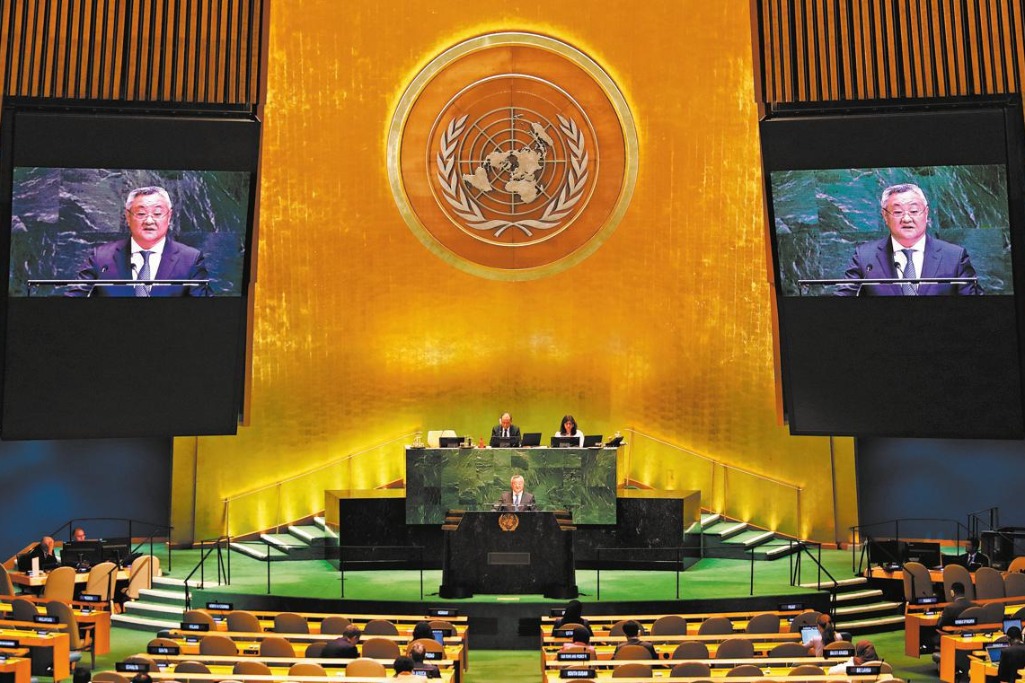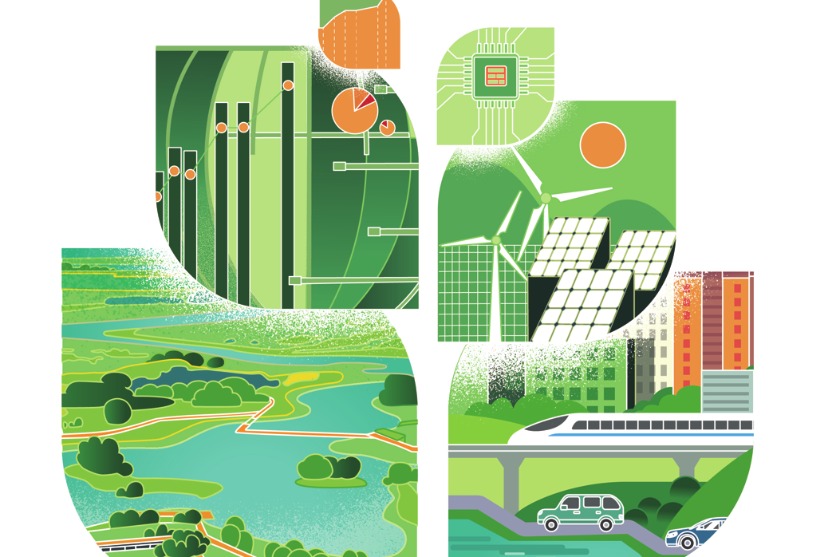Window of opportunity
Strengthening China-EU green partnership would help drive the post-pandemic recovery and the global low-carbon transition

Strengthening China-EU green partnership would help drive the post-pandemic recovery and the global low-carbon transition

After the UN Climate Change Conference in Glasgow in December 2021, green finance, green industry and the green economy have become irresistible trends. They are not only new economic growth drivers and core competitiveness for large economies, but also an important basis for the cooperation in meeting the challenges from global climate change.
However, under the influence of the COVID-19 pandemic, climate change and geopolitics, nimbyism, populism, anti-globalization, techno-nationalism and protectionism, global governance and the globalization process have begun to deviate from their original tracks, and the global economic cooperation has stalled.
As a result of the current Russia-Ukraine conflict, the European Union is accelerating its energy transition process, providing a good opportunity to construct a China-EU green economy partnership.
The EU, which was an early proponent of the green economy, is focusing on the development of green industries and green technologies on the principle of free marketization, and has put forward development initiatives and practices to promote a green transformation of its economy. It aims to integrate the global green industry chains and supply chains through the European Green Deal, climate legislation, carbon tariffs and other institutions as well as the Transatlantic Green Club.
On March 8, in a video summit with the French and German leaders, President Xi Jinping urged China and the EU to further deepen their green partnership by deepening their practical cooperation in various fields.
At the strategic, institutional and operational levels, both sides have already laid a good foundation for building a green partnership. At the strategic level, the heads of state and government of China and the EU have reached a series of important consensus around global climate governance and the comprehensive green and low-carbon transformation of economic and social development. At the institutional level, high-level dialogues and communication mechanisms covering climate, energy, and the ecological environment, as well as the green economy and technology, have been formed, such as the China-EU High-Level Environment and Climate Dialogue.
China and the EU have communicated in depth and collaborated closely in multilateral frameworks such as the G20 and the United Nations conferences on climate and biodiversity to promote the mainstreaming of environmental issues and the continuous development of global climate governance. At the operational level, China and the EU have implemented several cooperation projects with the aim of addressing climate change, protecting biodiversity and promoting sustainable production and consumption.
China holds nearly one-third of the world's renewable energy patents and is a world leader in key minerals, industrial processes, component production and assembly, which are necessary for green supply chains. The EU leads the world in the research and development of cutting-edge low-carbon technologies such as smart grids, hydrogen networks, carbon capture and storage, and the establishment of safe, recyclable and sustainable battery value chains. However, it is relatively weak in scaling and commercializing innovations, while the use of digital technologies to empower green and low-carbon development is China's strong point. China and the EU should fully explore their complementary strengths to address their respective weaknesses and achieve win-win cooperation.
China needs to make up for its shortcomings in green and low-carbon standards and measurement systems. It should accelerate its convergence with the green and low-carbon standards of the EU and establish a low-carbon standard measurement system that meets the requirements of accuracy, consistency, comparability and transparency. The two sides should also carry out dialogues and consensus on issues related to the EU's Carbon Border Adjustment Mechanism, and strengthen consultations in areas such as green finance and green manufacturing. China and the EU should also provide support for the green transitions of developing countries by exploring new institutional mechanisms and business model innovations, and providing broader policy references and technical solutions.
Since the Joe Biden administration took office in the United States, the trend of US-European policy convergence is obvious, and the introduction of "carbon tariffs "by the EU and the US reflects the deep-seated differences between the developed and developing countries around global climate governance, green economy competition, and the distribution of the benefits of green and low-carbon development. The key to the success of China-EU green cooperation lies in whether the EU can evaluate and recognize objectively China's practical achievements and positive contributions in addressing climate change, and whether it can truly practice its own strategic autonomy.
While the ideological and values diplomacy promoted by the US has cast a shadow over the China-EU green partnership, the global energy market disturbances since 2022 and Europe's "coal, gas and electricity" crisis have provided a window of opportunity for China-EU to boost their green cooperation. Geopolitical and commodity market disturbances have highlighted the energy security challenge, namely the uncertainty of fossil energy supplies, which the EU's energy decarbonization process has significantly accelerated. On the one hand, the EU is likely to implement stricter standards for green and low-carbon products in the future to protect local companies that bear higher energy costs, and Chinese products will face higher climate policy risks when entering the EU market. On the other hand, with high energy costs, the EU needs relatively low-cost Chinese green and low-carbon products, including Chinese photovoltaic, wind power components and new energy vehicles with excellent qualities and competitive prices, to build a green energy system. With the deteriorating security environment in the EU, massive capital outflows, serious inflation and economic setbacks, the EU needs a stable and positive China-EU relationship to stabilize the economy, protect people's livelihoods and reduce risks.
Yu Hongyuan is a professor and director of the Institute for Comparative Politics and Public Policy at the Shanghai Institutes for International Studies. Guan Chenglong is a research assistant of the Institute for Comparative Politics and Public Policy at the Shanghai Institutes for International Studies. The authors contributed this article to China Watch, a think tank powered by China Daily. The views do not necessarily reflect those of China Daily.
Contact the editor at editor@chinawatch.cn


































